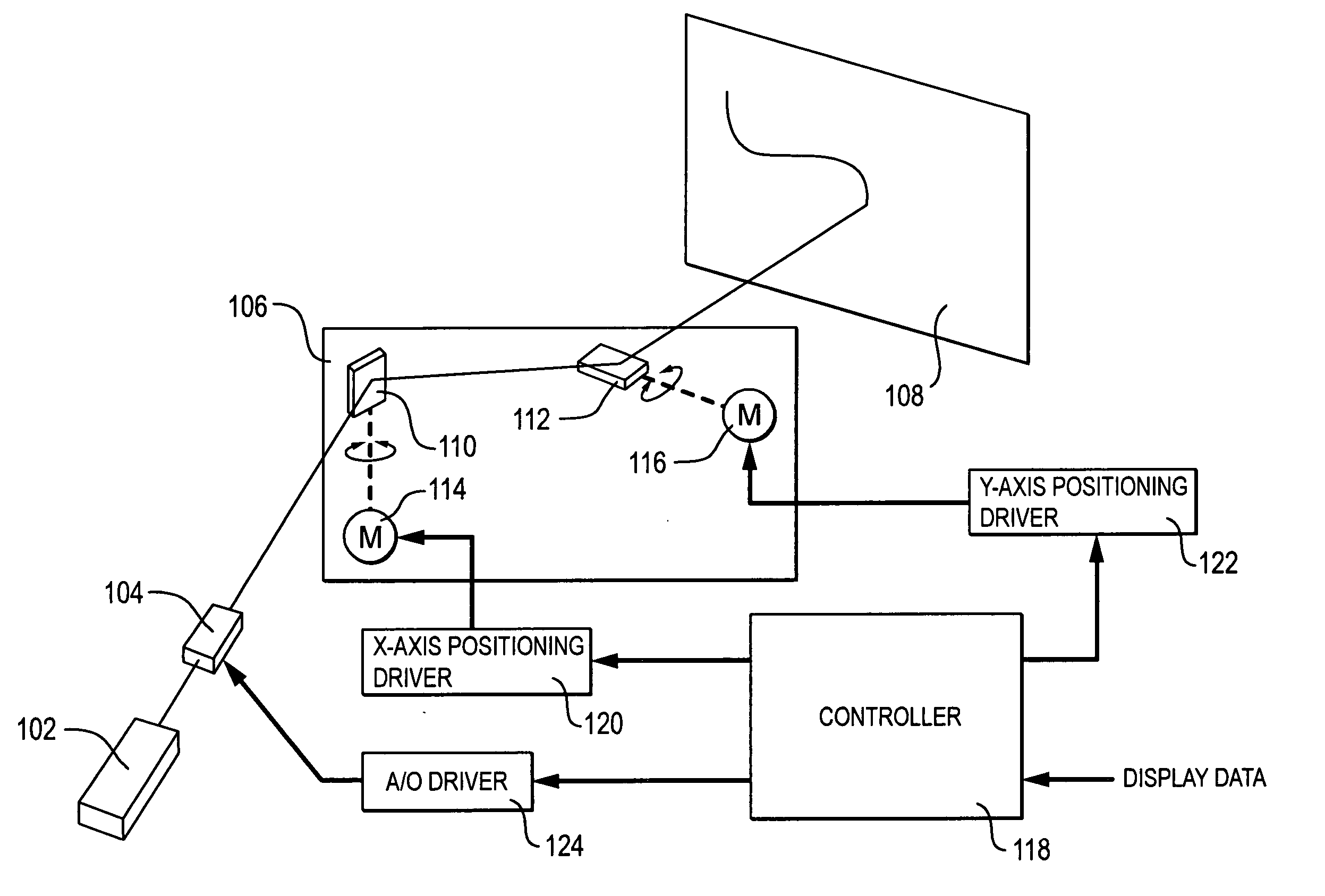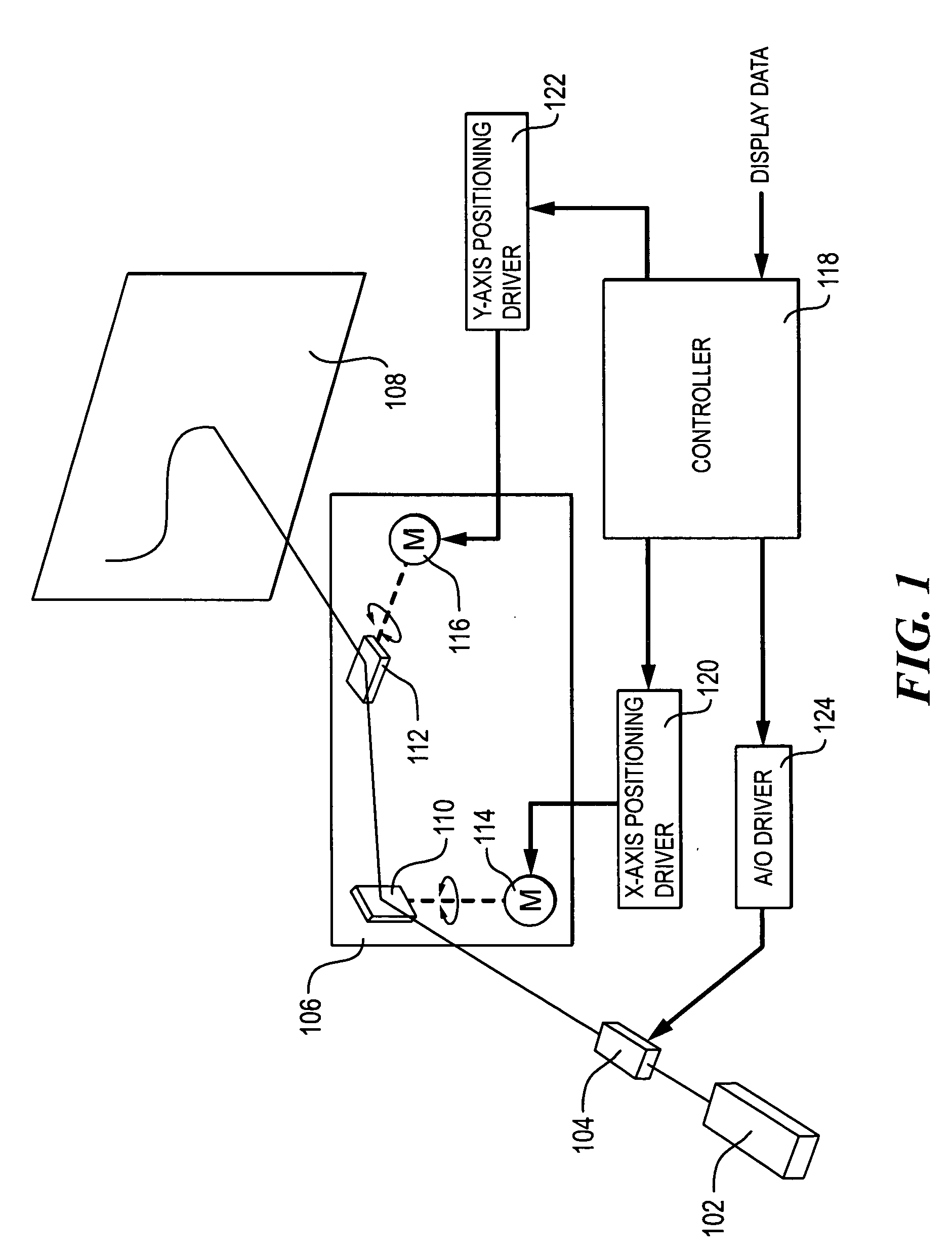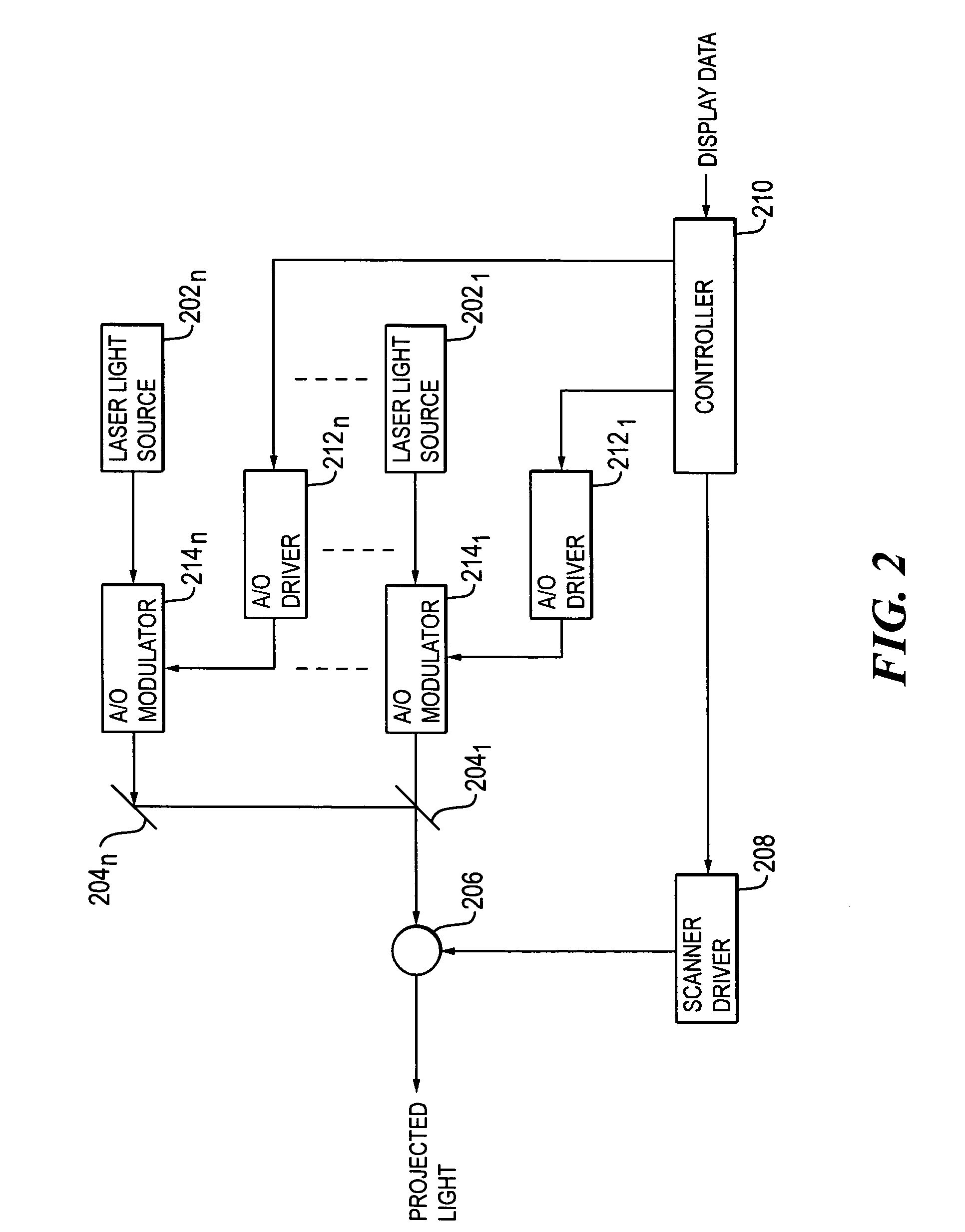Programmable laser illuminated sign apparatus
a technology of laser illumination and sign apparatus, which is applied in the field of card, picture or sign exhibiting, can solve the problems of low economic benefits, low use of neon lighted sign, and labor-intensive handicrafts, and achieve the effect of easy change of display
- Summary
- Abstract
- Description
- Claims
- Application Information
AI Technical Summary
Benefits of technology
Problems solved by technology
Method used
Image
Examples
Embodiment Construction
[0044] Prior art laser projection devices generally employ galvano-mirrors to control the deflection of projected laser light to produce images. Referring to exemplary prior art illustrated in FIG. 1, a beam emitted from light source 102 of substantially parallel beams, such as a laser, enters a light modulator, e.g. an A / O (acousto-optic) modulator 104. Instead of the A / O modulator 104, an E / O (electro-optical), mechanical, or other modulator may be used. After passing through the A / O modulator 104, the beam is deflected two-dimensionally by a galvanometer scanner 106 provided as a two-dimensional deflection means, and is projected on a screen 108. The galvanometer scanner 106 comprises a pair of beam deflecting galvano-mirrors 110 and 112 for x-axis scanning and y-axis scanning respectively, having two axes perpendicular to each other at the center of oscillation, and of a pair of servo motors 114 and 116 for angle control of mirrors 110 and 112 respectively. By employment of galv...
PUM
 Login to View More
Login to View More Abstract
Description
Claims
Application Information
 Login to View More
Login to View More - R&D
- Intellectual Property
- Life Sciences
- Materials
- Tech Scout
- Unparalleled Data Quality
- Higher Quality Content
- 60% Fewer Hallucinations
Browse by: Latest US Patents, China's latest patents, Technical Efficacy Thesaurus, Application Domain, Technology Topic, Popular Technical Reports.
© 2025 PatSnap. All rights reserved.Legal|Privacy policy|Modern Slavery Act Transparency Statement|Sitemap|About US| Contact US: help@patsnap.com



